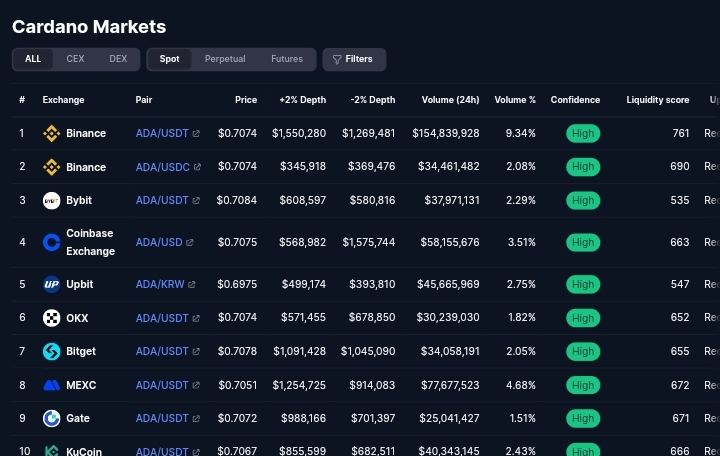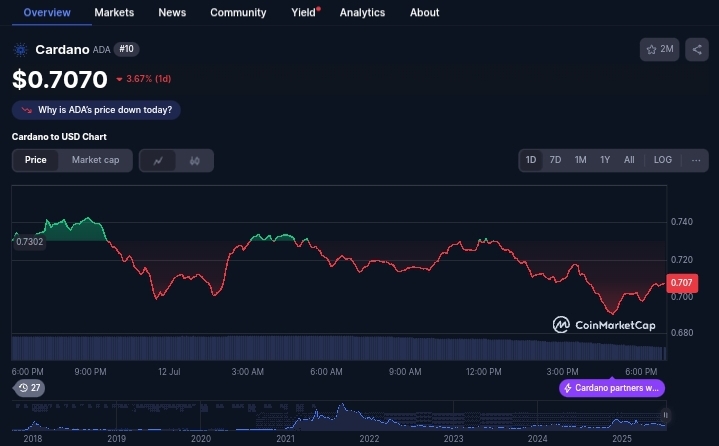Table of Contents
 Cardano stands as one of the most scientifically rigorous blockchain platforms in the cryptocurrency space. Built on peer-reviewed research and developed through evidence-based methods, it represents a fundamental shift in how blockchain technology can solve real-world problems.
Cardano stands as one of the most scientifically rigorous blockchain platforms in the cryptocurrency space. Built on peer-reviewed research and developed through evidence-based methods, it represents a fundamental shift in how blockchain technology can solve real-world problems.
Unlike Bitcoin’s energy-intensive proof-of-work system, Cardano operates on a proof-of-stake consensus mechanism called Ouroboros. This makes it significantly more environmentally sustainable while maintaining robust security.
The Revolutionary Ouroboros Protocol
Ouroboros is the world’s first provably secure proof-of-stake protocol. It divides time into epochs lasting approximately five days, with each epoch containing multiple 20-second slots. This elegant design enables Cardano to process transactions efficiently while consuming minimal energy.
The protocol achieves something remarkable. Cardano uses only 6 GWh annually, compared to Bitcoin’s staggering 110.53 TWh. That’s less than 0.01% of Bitcoin’s energy consumption, making it one of the most eco-friendly blockchains available.
Stake pool operators validate transactions based on their ADA holdings. The more ADA you stake, the higher your chances of being selected to validate blocks. This creates a self-sustaining ecosystem where participants are incentivized to act honestly.
Smart Contracts and the Two-Layer Architecture
Cardano employs a unique two-layer architecture that separates transaction settlement from computation. The settlement layer handles ADA transactions, while the computation layer runs smart contracts and decentralized applications (DApps). This separation offers distinct advantages:
Enhanced Security: By isolating financial transactions from complex computations, Cardano Ecosystem minimizes attack vectors and potential vulnerabilities.
Greater Flexibility: Developers can update the computation layer without affecting the core transaction functionality, enabling continuous improvement.
Improved Scalability: Processing transactions and smart contracts on separate layers prevents network congestion and maintains consistent performance.
The platform introduced smart contract functionality in September 2021 through the Alonzo upgrade. Developers can write smart contracts using Plutus, a Haskell-based language, or Marlowe, designed specifically for financial contracts. Learn more about how lace wallet helps in Cardano web3 ecosystem.
The Growing Cardano Ecosystem

Cardano’s ecosystem extends far beyond cryptocurrency trading. Real-world applications are already transforming industries across the globe.
In Ethiopia, the government partnered with IOHK to create a blockchain-based identity system for five million students. This groundbreaking initiative demonstrates how Cardano can provide digital identity solutions in developing nations.
New Balance launched a pilot program using Cardano to authenticate basketball shoes. Customers can verify the authenticity of their purchases through Cardano blockchain technology, combating counterfeiting in the luxury goods market.
The platform also supports non-fungible tokens (NFTs) and decentralized finance (DeFi) applications. Artists like Snoop Dogg have released NFT collections on Cardano, while various DeFi protocols offer lending, borrowing, and yield farming opportunities.
World Mobile Token, built on Cardano Ecosystem, provides mobile network access in remote African regions. With approximately 150 nodes across East Africa, it showcases how blockchain can bridge the digital divide.
ADA Price Analysis and Future Predictions

ADA Price reached its all-time high market cap of $77 billion in May 2021, ranking fourth among all cryptocurrencies. The ADA token’s price movements reflect both market sentiment and technological developments on the platform.
However, Several factors influence ADA’s price trajectory:
Technological Upgrades: Each development phase (Byron, Shelley, Goguen, Basho, and Voltaire) brings new capabilities that can drive adoption and price appreciation.
Regulatory Environment: The SEC’s actions against various exchanges regarding staking services created short-term volatility. However, Cardano’s scientific approach and transparency may position it favorably in future regulations.
Ecosystem Growth: As more projects launch on Cardano, increased utility drives demand for ADA tokens.
Expert predictions for 2025 and beyond vary widely. Conservative estimates suggest ADA could reach $3-5 if current adoption trends continue. More optimistic forecasts predict $10 or higher, assuming successful implementation of all planned features and widespread enterprise adoption.
The recent Chang upgrade introduced on-chain governance, allowing ADA holders to vote on protocol changes. This democratization of decision-making could attract institutional investors seeking transparent, community-driven projects.
Cardano vs Ethereum: The Key Differences
While both platforms support smart contracts, Cardano offers several advantages over Ethereum:
Energy Efficiency: Cardano’s proof-of-stake system consumes 99.99% less energy than Ethereum’s former proof-of-work model.
Transaction Costs: ADA transactions typically cost fractions of a dollar, compared to Ethereum’s often expensive gas fees.
Academic Rigor: Every aspect of Cardano undergoes peer review before implementation, ensuring robust security and functionality.
Scalability Solutions: Cardano’s layered architecture and planned Hydra scaling solution promise to handle millions of transactions per second.
However, Ethereum maintains a significant first-mover advantage with a larger developer community and more established DeFi ecosystem. Cardano continues working to close this gap through strategic partnerships and developer incentives.
Cardano Blockchain: What’s The Way Forward

Cardano’s methodical, research-driven approach sets it apart in the fast-moving crypto space. The platform’s commitment to solving real-world problems in developing nations demonstrates blockchain’s transformative potential beyond speculation.
As the Basho and Voltaire eras unfold, Cardano will introduce enhanced scalability and complete decentralization. These upgrades position ADA as a compelling long-term investment for those believing in blockchain’s future.
The combination of environmental sustainability, rigorous security, and practical applications makes Cardano a unique proposition in the cryptocurrency landscape. Whether ADA reaches expert price predictions depends on continued ecosystem growth and successful execution of its ambitious roadmap.
For investors and technologists alike, Cardano blockchain represents more than just another cryptocurrency. It embodies a vision for redistributing power from centralized institutions to individuals, creating a more equitable and transparent global financial system.